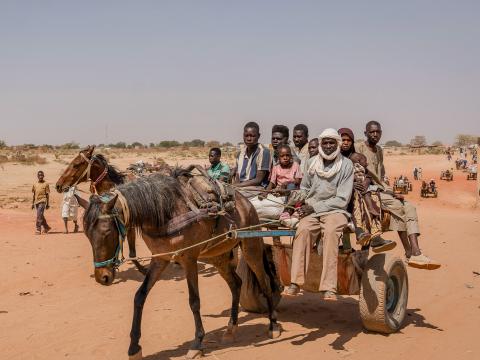Over 32 million in Sudan and South Sudan Alone Face Acute Food Insecurity, Warns New Multi-Country Report

Sudan has the highest rate of severe household hunger among the six countries surveyed, with 38.7% of households facing severe hunger.
Nearly 87% of households in the Central African Republic (CAR) are resorting to extreme coping mechanisms to survive.
Fewer than 1% of households reported low or no food-related stress in CAR.
20 May, 2025 – A sweeping multi-country humanitarian assessment has revealed a deepening crisis across six East and Central African countries, with Sudan and South Sudan at the epicentre of an unfolding catastrophe, according to international aid agency, World Vision. The Sudan Crisis and Migration Emergency Response (SCRAMER) report—compiled from over 3,300 household surveys and dozens of interviews and focus groups—paints a dire picture of escalating hunger, mass displacement, and crumbling access to basic needs, especially for children.
Between October 2024 and May 2025, 24.6 million people in Sudan —over half the population—are projected to be in Crisis or worse (IPC Phase 3+), with 8.1 million in Emergency (Phase 4) and at least 638,000 in Catastrophe (Phase 5). South Sudan mirrors this grim reality, with nearly 7.7 million people (57%) expected to face crisis-level hunger between April and July 2025.
“We are staring at a humanitarian abyss,” said Simon Mane, the SCRAMER Multi-Country Response Director. “When half the population of a country is unsure of their next meal, and hundreds of thousands are in catastrophe levels of food insecurity, it is no longer a crisis—it is a collapse. The world is standing by while millions of children in East and Central Africa are at risk of malnutrition and hunger. Many people don’t even know about it because it rarely makes the headlines.”
The World Vision report documents that Sudan has the highest rate of severe household food insecurity among the six countries surveyed, with 38.7% of households surveyed facing severe food insecurity and more than half reporting moderate food insecurity. Even outside Sudan, only 6.21% of households surveyed have even acceptable food consumption levels in Ethiopia, food insecurity is deeply entrenched; 89% of households surveyed in Uganda and nearly 87% in the Central African Republic (CAR) are resorting to extreme coping mechanisms such as skipping meals, borrowing food, or reducing portion sizes. In CAR, fewer than 1% of surveyed households reported low or no food-related stress, underscoring how hunger has become the norm rather than the exception.
Children are among the most affected. Across all six countries—Sudan, South Sudan, CAR, Chad, Ethiopia, and Uganda—the report highlights a sharp deterioration in child well-being. School dropout rates are soaring, while displacement, trauma, and exposure to violence and disease are becoming tragically routine. Girls, in particular, are facing increased risks of violence and exploitation.
Access to humanitarian aid remains patchy and insufficient. Many surveyed households reported not receiving any assistance in the past six months, while aid delivery is often disrupted by insecurity, logistical hurdles, and funding gaps. Market access is constrained by high transport costs and safety concerns, and financial inclusion is uneven—while over 92% of Ugandans use mobile money, countries like CAR lag far behind, with just 4.5% reporting access to such services.
“Almost everything is working against the people of East and Central Africa when it comes to accessing food. The situation was already dire before recent global funding cuts, and they will deteriorate even further now unless the international community steps up and prioritises the lives of children in this region. The time is now.”
Despite these challenges, communities expressed powerful hopes for peace, recovery, and a future beyond conflict. The report calls for urgent, multi-sectoral interventions including emergency food aid, cash and voucher assistance, child protection, and investment in water, sanitation, and health systems. It also calls for the international community to prioritise the voices of affected populations and advocate for safe access to those trapped in hard-to-reach areas.
“We need to do more than respond—we need to listen, adapt, and build lasting solutions,” said Mane. “The people affected by this crisis are not just statistics. They are agents of change and recovery. We must stand with them not only with aid, but with accountability, dignity, and hope. We must act now, across borders and sectors, before more lives are lost.”
For more information, please contact:
Grace Mavhezha, Communications and Public Engagement Manager, WV Sudan: grace_mavhezha@wvi.org
Jennifer Watson, Regional Director - Communications & Public Engagement, WV East Africa: jennifer_watson@wvi.org
Ange Gusenga-Tembo, Regional Director - Communications & Public Engagement, WV West Africa: ange_tembo@wvi.org
World Vision is a Christian humanitarian organisation dedicated to working with children, families and their communities to reach their full potential by tackling the root causes of poverty and injustice. World Vision serves all people, regardless of religion, race, ethnicity or gender.
For more information, please visit www.wvi.org